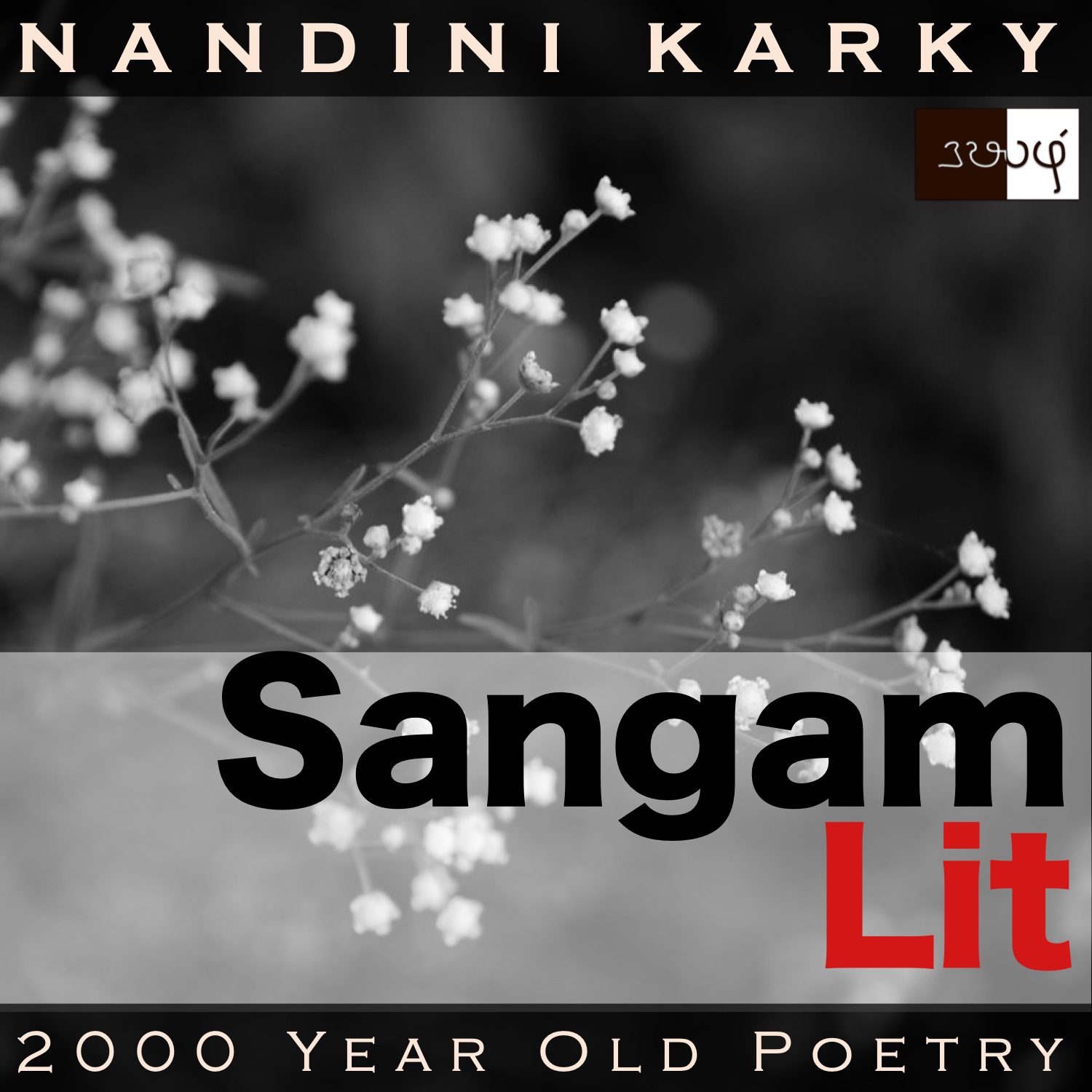Podcast: Play in new window | Download
Subscribe: Apple Podcasts | Spotify | Amazon Music | Android | iHeartRadio | Email | TuneIn | RSS | More

In this episode, we perceive the projection of an emotion on an element in nature, as depicted in Sangam Literary work, Kurunthogai 348, penned by Maavalathanaar. Set in the drylands of ‘Paalai’, the verse speaks in the voice of the confidante rendering the lady, an assurance that the man will not part away from her.
தாமே செல்பஆயின், கானத்துப்
புலம் தேர் யானைக் கோட்டிடை ஒழிந்த
சிறு வீ முல்லைக் கொம்பின் தாஅய்,
இதழ் அழிந்து ஊறும் கண்பனி, மதர் எழில்
பூண் அக வன முலை நனைத்தலும்
காணார்கொல்லோ-மாணிழை!-நமரே?
‘Won’t he see that?’ is the central question on which the verse rests. In the opening words ‘தாமே செல்பஆயின்’ meaning ‘if he were to leave on his own’, the core theme of separation is established. The phrase ‘கானத்துப் புலம் தேர் யானை’ meaning ‘the jungle elephant searching for a field to graze’ gives a subtle hint about this setting, being that of the drylands, for if food were plentifully available, the elephant wouldn’t be going in search, would it? ‘Tiny jasmine flowers’ bloom in the words ‘சிறு வீ முல்லை’. From that joyous glimpse, the verse does a 180-degree turn and talks about ‘இதழ் அழிந்து ஊறும் கண்பனி’ meaning ‘water droplets that cross the line of the eyelids’. Ending with the words ‘காணார்கொல்லோ – மாணிழை! நமரே?’ meaning ‘won’t your lover see that, O bejewelled maiden’, the verse invites us to see within.
It’s all about seeing and sensing, this one! The context reveals that the man and lady were leading a happy, married life when the lady felt that the man was about to part away with her to go in search of wealth. She confides her anxiety to her confidante, and this friend, in reply, says to her, “If he were to go by himself, won’t he see the jungle elephant, going in search of grazing land, and also, amidst the elephant’s trunk, the small-flowered jasmine creeper that lies spread out, which looks like tear drops that seep beyond the eyelids and drop down to drench your exquisite, bedecked bosom, O maiden wearing well-crafted ornaments?” With these words, the confidante assures the lady that the man would definitely not part with her.
How does the confidante convince the lady? To understand, let’s follow her words closely. First, the confidante brings into focus, an elephant and its hasty stride, looking hither and thither for a grazing spot. Then, moving closer in, the confidante points to a creeper of tiny wild jasmine flowers, lying around the elephant’s tusk. Then, she turns to the lady and asks, if the man were to leave without you, as you seem to think, won’t he come upon this sight of the elephant in the wild, carrying the jasmine creeper. When that happens, he is sure to think about how your tears rush beyond the eyes and fall on your alluring, ornamented bosom, the confidante concludes to the lady.
The confidante believes that the sight of the elephant and the creeper, reminding the man of the lady’s tear-spotted bosom, in his mind’s eye, would put the brakes on his intention to part away from the lady. How can he take even one step further, is the confidante’s unsaid question and solid assurance to slay the worry in the lady’s heart! So much seems to have depended on the man’s parting with the lady that Sangam poets have approached it from every possible angle and point of view. To me, the special element here is how something seen in nature reminds a person of their beloved. This, in a way, is a verbal portrait of the unbreakable threads that bind love and life as one, in this vast world!




Share your thoughts...